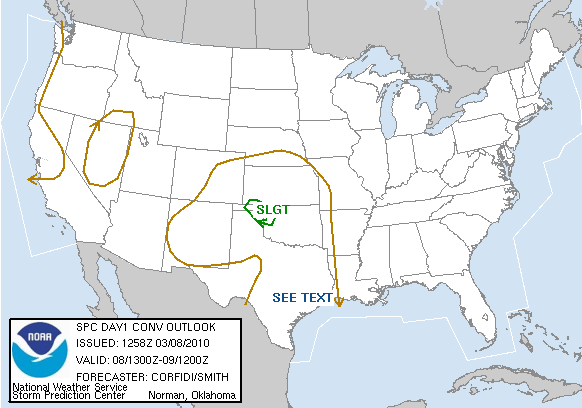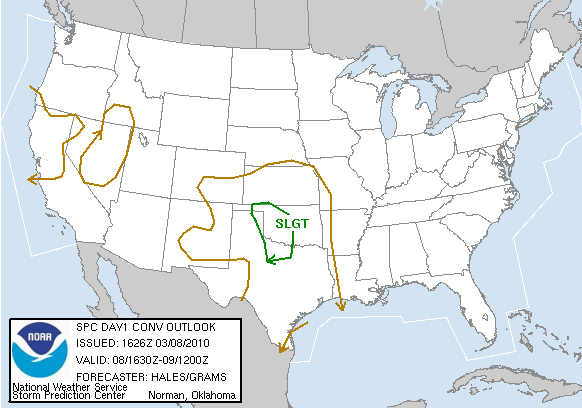A Needle in a Haystack
This morning I woke up and noticed the Storm Prediction Center's Day One Convective Outlook. A simple slight risk area over northwestern Oklahoma with a 2% risk for tornadoes. I already knew I couldn't storm chase (though I don't consider myself a storm chaser by any stretch of the imagination), but being in Norman, Oklahoma, I know many friends who are devoted storm chasers. Dynamics weren't bad (30 knot low-level jet), decent wind shear, and a little CAPE. Dew points were severely lacking though, and this lack of moisture was one of the biggest factors keeping most recreational storm chasers from going out today.

Fast forward to 11:30 am. Over lunch, me and a friend looked at the setup (but neither of us are available to chase). CAPE was really starting to ramp up, but in Texas, but both of us came to the conclusion that while today was a solid slight risk day, not something we would want to chase (linear mode with little tornado threat). The SPC had shifted the slight risk area farther south and east.


I finished up classes today at around 2:30 pm central time, and examined the weather conditions yet again. I held my previous conclusion that the event had potential to produce severe weather (in Texas), but was not chaseable. At around 5:00 pm, I left my apartment to pick up a friend from the Oklahoma City airport. I was approaching the I-235/I-35 interchange when I got a phone call that changed the day. "Jason! There is a huge tornado on the ground near Elk City!" My immediate reaction was more astonishment than anything else. How could a tornado, especially a strong one, form in western Oklahoma? Looking back at the radar, it's kinda hard to pinpoint exactly where the tornado was located (it's somewhere in the red "blob").


In conclusion, any storm chasers who "missed" this tornado thinking there wouldn't be anything out there today, should not feel bad for missing this storm. It was virtually impossible to predict anything like this would have developed. With the SPC only putting out a 2% risk for tornadoes (which was still quite accurate considering there was one isolated tornado), it's no surprise many people didn't chase. The only chasers that saw this tornado were extremely devoted (and lucky) storm chasers. The severe weather season has a long way to go!




